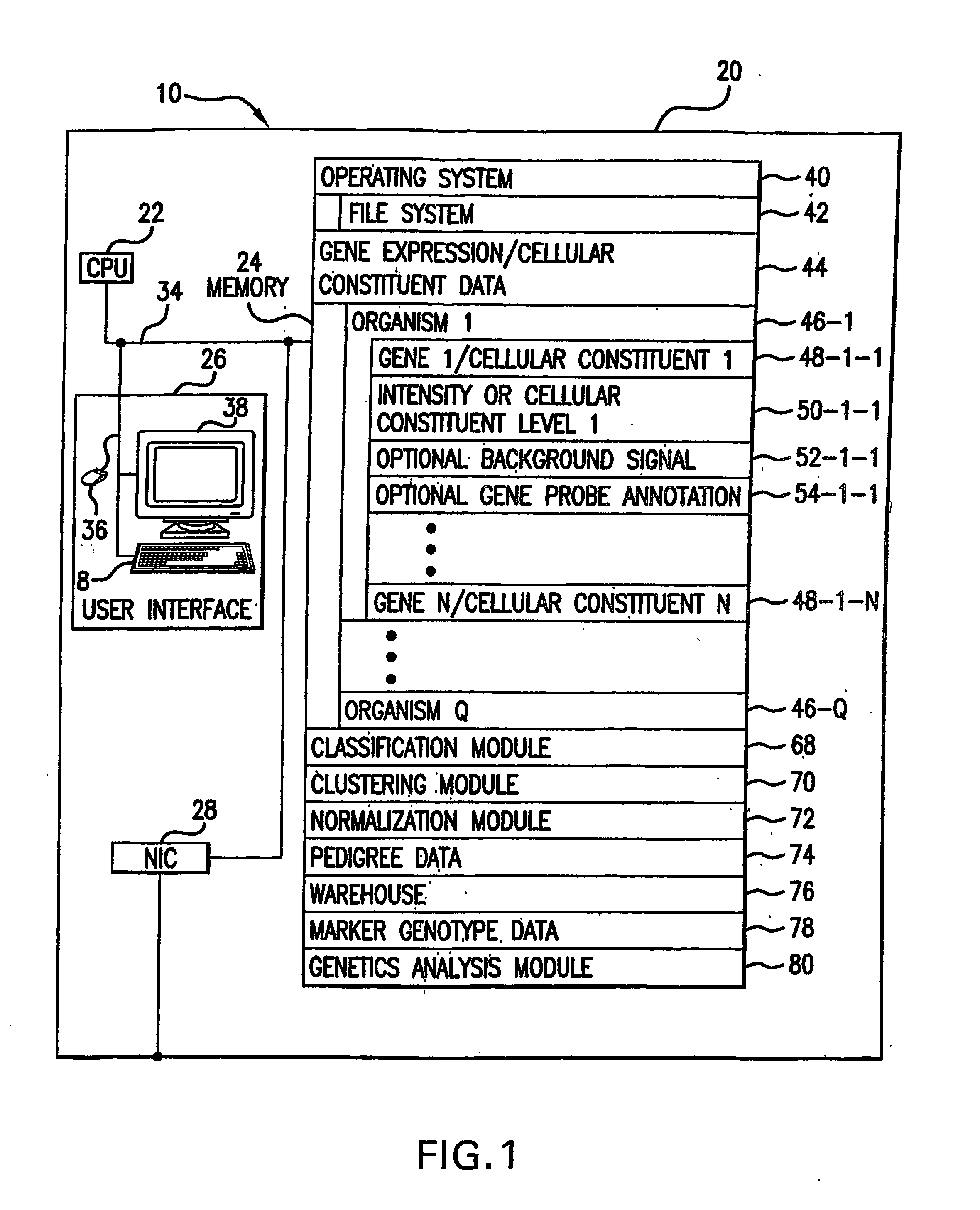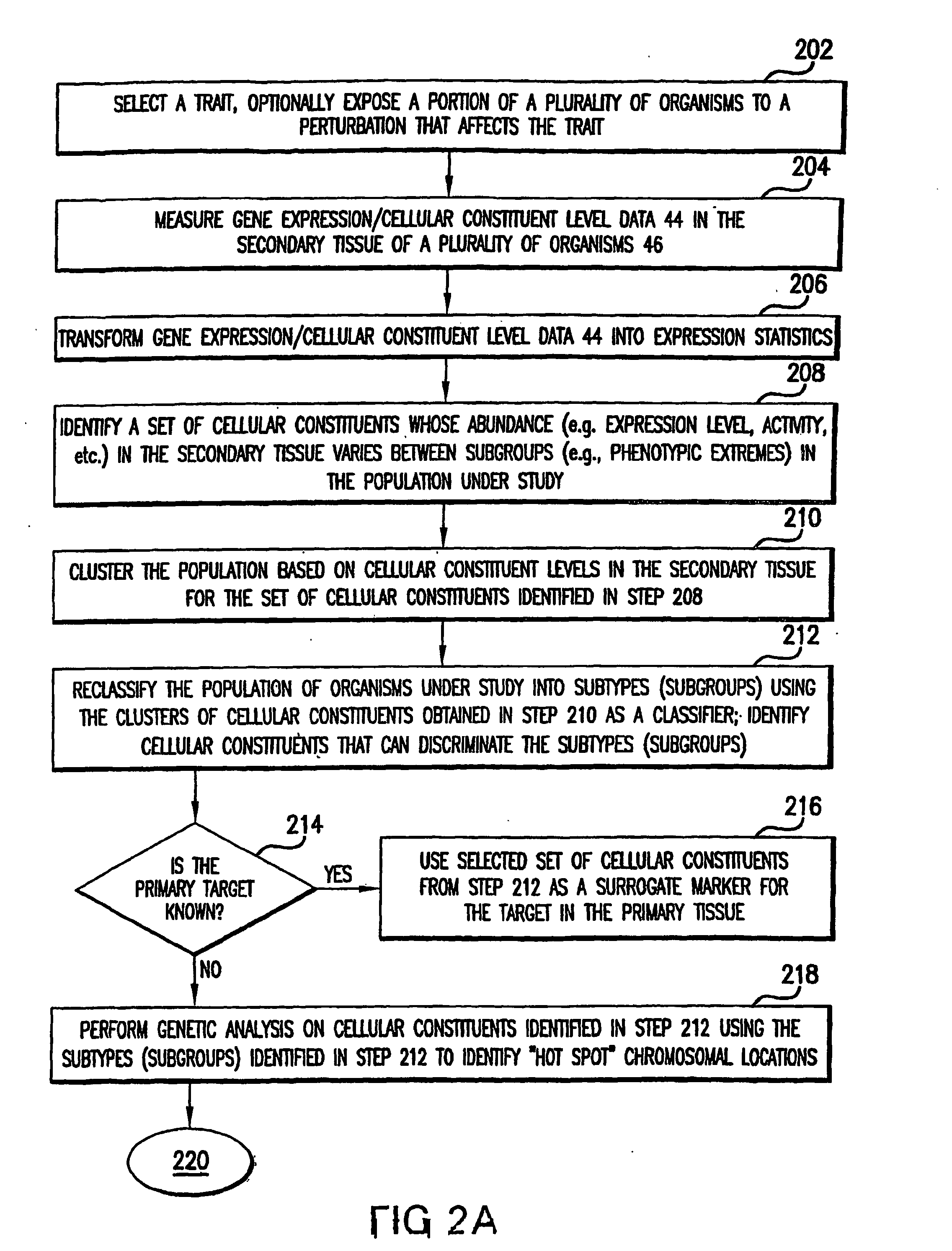The goal of identifying all such regions that are associated with a specific complex
phenotype is typically difficult to accomplish because of the sheer number of QTL, the possible epistasis or interactions between QTL, as well as many additional sources of variation that can be difficult to model and detect.
A drawback with QTL approaches is that, even when genomic regions that have statistically significant associations with traits are identified, such regions are usually so large that subsequent experiments, used to identify specific causative genes in these regions, are
time consuming and laborious.
Furthermore, physical resequencing of such regions is often required.
In fact, because of the size of the genomic regions identified, there is a danger that causative genes within such regions simply will not be identified.
In the event of success, and the genomic region containing genes that are responsible for the trait variation are elucidated, the expense and time from the beginning to the end of this process is often too great for identifying genes and pathways associated with traits, such as complex human diseases.
However, the regions identified using linkage analysis are still far too broad to identify candidate genes associated with the trait.
Even with the more narrowly defined linkage region, the number of genes to validate is still unreasonably large.
This approach is problematic because it is limited to what is currently known about genes.
Often, such knowledge is limited and subject to interpretation.
As a result, researchers are often led astray and do not identify the genes affecting the trait.
There are many reasons that standard genetic approaches have not proven very successful in the identification of genes associated with traits, such as common human diseases, or the biological pathways associated with such traits.
That is, they potentially involve many genes across several different biological pathways and they involve complex
gene-environment interactions that obscure the
genetic signature.
Second, the complexity of the diseases leads to a heterogeneity in the different biological pathways that can give rise to the
disease.
This reduces the ability to identify the genetic
signal for any given pathway.
Fourth, the traits and
disease states themselves are often not well defined.
This reduces the power of detecting the associations.
Fifth, even when
gene expression and a trait are highly correlated, the genes may not give the same
genetic signature.
In addition to the heterogeneity problems discussed above, the identification of genes and biological pathways associated with traits, such as complex human diseases, using
genetics data is confounded, when using human subjects, due to the inability to use common genetic techniques and resources in humans.
Therefore, there is typically very little pedigree data available for humans.
Elucidation of genes associated with complex diseases in humans is also difficult because humans are diploid organisms containing two genomes in each nucleate
cell, making it very hard to determine the
DNA sequence of the haploid
genome.
Because of these limitations, genetic approaches to discovering genes and biological pathways associated with complex human diseases is unsatisfactory.
However, all of the methods still fall short when it comes to efficiently identifying genes and pathways associated with complex diseases.
For this and other reasons, the elucidation of genes involved in biological pathways that influence a trait, such as a disease, using
gene expression approaches is expensive, problematic and generally not successful in many instances.
However, in many instances, the targeted gene is only expressed in a
tissue type that is not readily obtainable.
However, similar to the
drug discovery case, the problem with known
gene discovery techniques is that
in vivo gene activity data is difficult to obtain in instances where the relevant activity occurs in a tissue that is either difficult to obtain.
 Login to View More
Login to View More  Login to View More
Login to View More 


